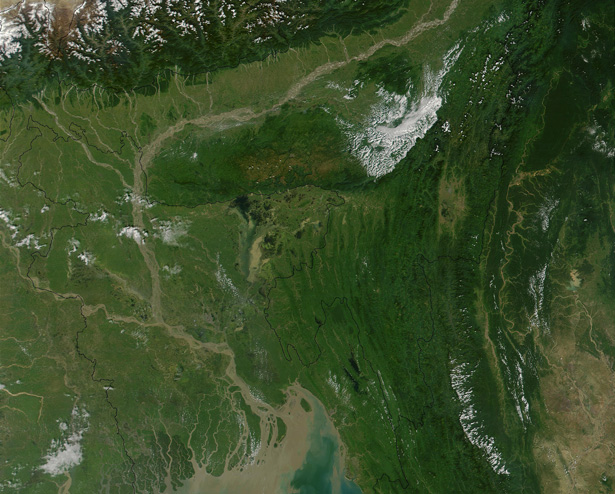-
Carl Gierstorfer, Pulitzer Center on Crisis Reporting
River Erosion a Push Factor for India’s Bride Trafficking
March 27, 2013 By Wilson Center Staff
The original version of this article, by Carl Gierstorfer, appeared on the Pulitzer Center on Crisis Reporting.
After spending almost two weeks in India’s northwestern state of Haryana, the destination for many trafficked brides, we decided to head to the source area. It lies two hours by plane to the east, in the lush green hills of Assam. Here, as well as in the surrounding states of West Bengal, Bihar, and Nagaland, many women are trafficked from the towns and villages to live the lives of slaves more than a thousand miles away from their homes.
We wanted to find out why.
Guwahati is a sleepy town on the banks of the Brahmaputra that doesn’t betray the poverty of the surrounding countryside. Just twenty minutes northwest of Guwahati, the roads are filled with potholes and travel is slow.
It is the dry season and the Brahmaputra flows sluggishly, its banks overlooking the water level by several meters. But even the untrained eye can see how ferocious this holy river can turn once the rainy season starts and the snows of the Himalayas begin to melt. “Then, the Brahmaputra kills a lot of people,” as Ashraf, a local journalist who has come with us, points out.
Continue reading at the Pulitzer Center.
Photo Credit: The Brahmaputra/Ganges Delta, courtesy of NASA.
 A Publication of the Stimson Center.
A Publication of the Stimson Center.



